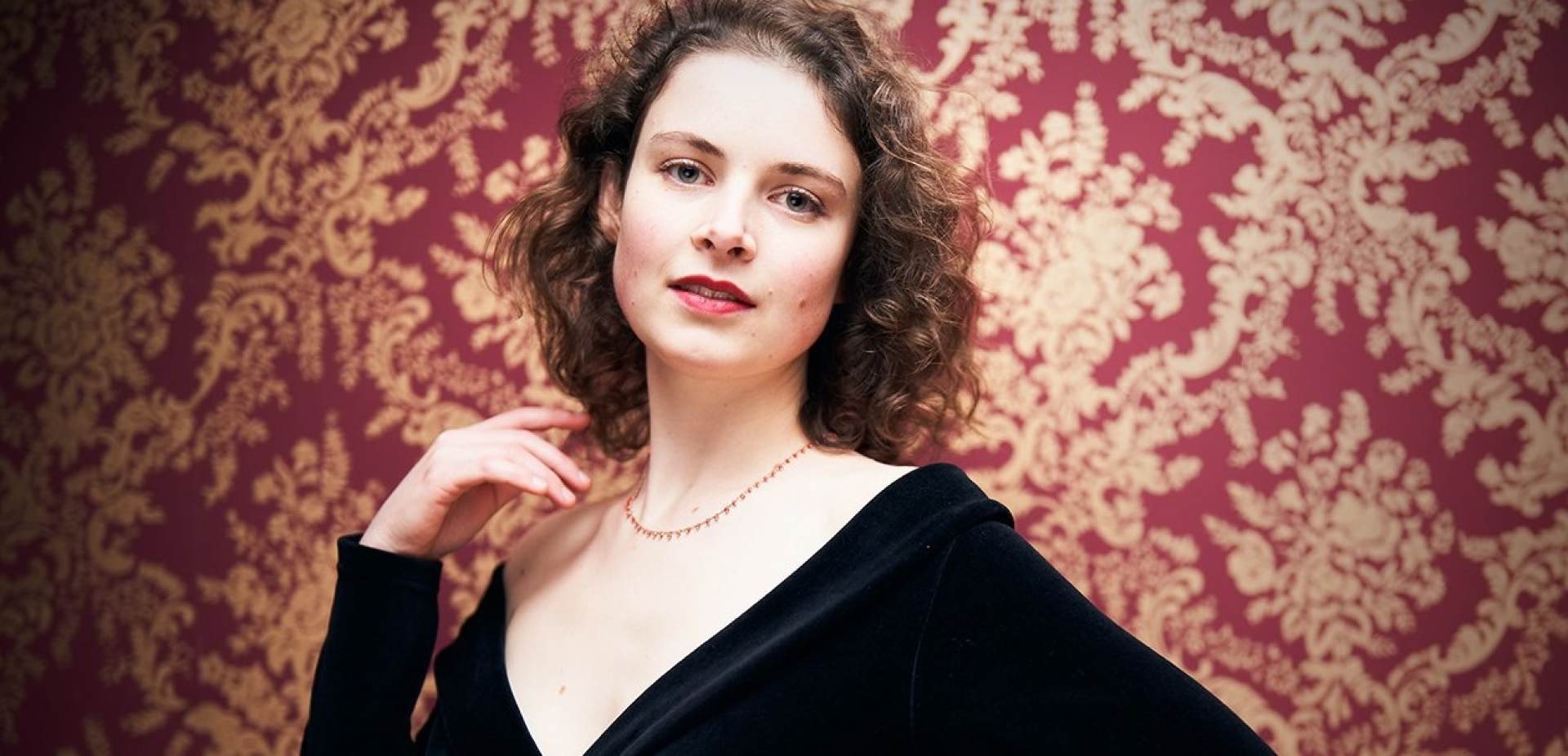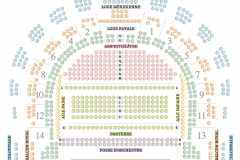Actéon Charpentier
Mo | Tu | We | Th | Fr | Sa | Su |
Musical tragedy in six scenes to an anonymous libretto based on Ovid’s Metamorphoses, first performed in 1684.
Opera in staged version
Synopsis
Scene 1: Actéon's hunting party is searching for a bear that has been ravaging the woods of the goddess Diane (Chorus: "Allons, marchons, courons" – Actéon’s Aria: "Déesse par qui je respire" – two hunters: "Vos vœux sont exaucés").
Scene 2: A little aside, Diane, her friends Arthébuze, Daphné, and Hyale, and other nymphs are bathing in a spring (Diane’s Aria: "Nymphes, retirons-nous" – Chorus: "Charmante fontaine"). Daphné and Hyale warn all lovers to stay away from this place (Duet: "Loin de ces lieux tout cœur profane"). Arthébuze and other nymphs even recommend avoiding love entirely to escape the associated pains (Aria Arthébuze and Chorus: "Ah! Qu’on évite de langueurs").
Scene 3: Actéon separates from the other hunters to rest (Recitative and Aria Actéon: "Amis, les ombres raccourcies" – "Agréable vallon, paisible solitude"). He spots the nymphs and sneaks up to watch them. When Diane discovers him, he tries in vain to excuse himself, claiming it was merely an unfortunate accident. As punishment, Diane sprinkles him with water (Duet Diane/Actéon: "Nimphes, dans ce buisson quel bruit viens je d’entendre?"). The nymphs mock him: He can no longer boast of his observations (Chorus: "Vainte toy maintenant, profane").
Scene 4: Looking at his reflection in the spring, Actéon realizes he is gradually turning into a stag. Little by little, he loses all human characteristics, including his voice (Recitative Actéon: "Mon cœur autre fois intrépide" – Complaint).
Scene 5: The hunting dogs tear the stag to pieces. The hunters celebrate their success and search for Actéon to show him their prey (Chorus: "Jamais troupe de chasseurs").
Scene 6: The goddess Junon announces to the hunters that Actéon has been devoured by his own dogs (Aria Junon: "Chasseurs, n’appelez plus qui ne peut vous entendre" – Chorus: "Hélas, déesse, hélas!"). The hunters lament his fate (Chorus: "Hélas, est-il possible").
Program and cast
OLYMPE CATEGORY: Free seating in the category, best seats available, a prestigious cocktail reception with gourmet treats and champagne at your discretion.
DIANE CATEGORY: Free seating in the category, a prestigious cocktail reception with champagne at your discretion.
ACTEON CATEGORY: Free seating in the category, a cocktail reception with champagne at your discretion.
Royal Opera Academy Gala Concert
Attila Varga-Tóth: Actéon
NN: Diane
NN: Arethusa
NN: Daphne
NN: Hyale, Junon
Soloists and Orchestra of the Royal Opera Academy
Chloé de Guillebon Clavecin et direction
Palace of Versailles Opera Theater
Royal Opera
The Royal Opera of Versailles, located in the grounds of the Castle, one of the major opera houses.
The opening of the opera house at Versailles brought to a close a process of planning, projects and designs that had lasted for nearly a century. While the Royal Opera was finally built towards the end of the reign of Louis XV, it had been envisaged since as early as 1682, the year when his predecessor Louis XIV took up residence at Versailles. The King had commissioned Jules Hardouin-Mansart and Vigarani to draw up plans for a ballet theatre. Mansart shrewdly decided on a position at the far end of the new wing that was to be built over the coming years: the nearby reservoirs for the gardens’ fountains could be used to fight any fire that might break out, while the sloping ground on that part of the site would allow provision of the necessary technical spaces below the stage without major excavation work. So cleverly-chosen, indeed, was the planned location that none of Mansart’s successors ever questioned it.
Major building work was already under way in 1685, but was soon interrupted because of the wars and financial difficulties which beset the later part of the king’s reign. Louis XV in his turn was long put off by the huge expense involved in the project. As a result, for almost a century the French court was forced to put up with a makeshift theatre installed below the Passage des Princes. When a grand opera was required, with a large cast and complicated stage machinery, a temporary theatre would be built in the stables of the Grande Ecurie, with the entire structure being demolished once the performances were over. This temporary solution was adopted, for instance, during the celebrations of the Dauphin’s wedding in February 1745, but its inconvenience was so starkly obvious that Louis XV finally resolved to build a permanent theatre, entrusting its design to his first architect, AngeJacques Gabriel.
The process of actually building the new theatre, however, was to take over twenty years. During this lengthy period of construction Gabriel, who had studied the leading theatres of Italy, in particular Vicenza, Bologna, Parma, Modena and Turin, presented a series of different designs to his royal patron, none of which was accepted. Only in 1768, faced with the forthcoming successive marriages of his grandchildren, did the king finally give the order for work to commence. Building progressed steadily and the new opera house was completed in twenty-three months, ready for its inauguration on the 16th of May 1770, the day of the Dauphin’s marriage to the Archduchess Marie-Antoinette, with a performance of Persée by Quinault and Lully.
Royal Chapel
This extraordinary two-level palatine chapel was built by Jules Hardouin Mansart between 1699 and 1708 and completed by Robert de Cotte in 1710.
The paintings on the vaulted ceiling by Antoine Coypel, Charles de la Fosse and Jean Jouvenet, as well as the lavish decoration fashioned by a team of sculptors working for Louis XIV, depict a number of Old and New Testament scenes. Facing the royal gallery is the remarkable organ, created by Robert Clicquot, the King's organ builder, which was first played on Easter Sunday 1711 by François Couperin.
Even though Hardouin-Mansart did not witness the completion of the chapel, he was the one who had dictated the major aspects of the architecture and decor: a ground floor with a nave, aisles and ambulatory, and an upper floor with galleries, a harmonious combination of white and gold contrasting with the polychromatic marble floor and paintings on the vaulted ceiling, all combining to create an original space with references to both gothic architecture and baroque aesthetics.
Every day, generally at 10 a.m., the court would attend the King's mass. The King would sit in the royal gallery, surrounded by his family, while the ladies of the court would occupy the side galleries. The "officers" and the public would sit in the nave. The King would only descend to the ground floor for important religious festivals when he would take communion, for Order of the Holy Spirit ceremonies and for the baptisms and weddings of the Children of France, which were celebrated there between 1710 and 1789. Above the altar, around the Cliquot organ played by the greatest virtuosos of their age, including François Couperin, the Chapel Choir, renowned throughout Europe, would sing motets throughout the entire service, every day.
The Orangerie gardens
From May to October, orange trees and other shrubs are taken out of the Parterre Bas of the Orangerie gardens. At the center of this parterre, there is a large circular pool surrounded by six sections of lawn.
Orangerie
A great stone cathedral within a formal garden, The Orangerie is both a royal and magical place.
Built between 1684 and 1686 by Jules Hardouin-Mansart to house and protect precious trees and shrubs during the Winter, this extraordinarily large building is located beneath the parterre du Midi (South flowerbed), for which it acts as a support. Two monumental staircases, known as "les Cent Marches" (the hundred steps), frame the Orangerie's three galleries, which overlook the parterre where, during the Summer, more than 1,200 exotic trees are arranged.

 EN
EN DE
DE IT
IT FR
FR ES
ES RU
RU JP
JP RO
RO
 Seating plan
Seating plan 
